How to grow tomatoes: elevate your summer salads with these tips for tomato growing
Discover how to grow tomatoes indoors, in a greenhouse, or in the ground and enjoy a bumper crop that tastes delicious
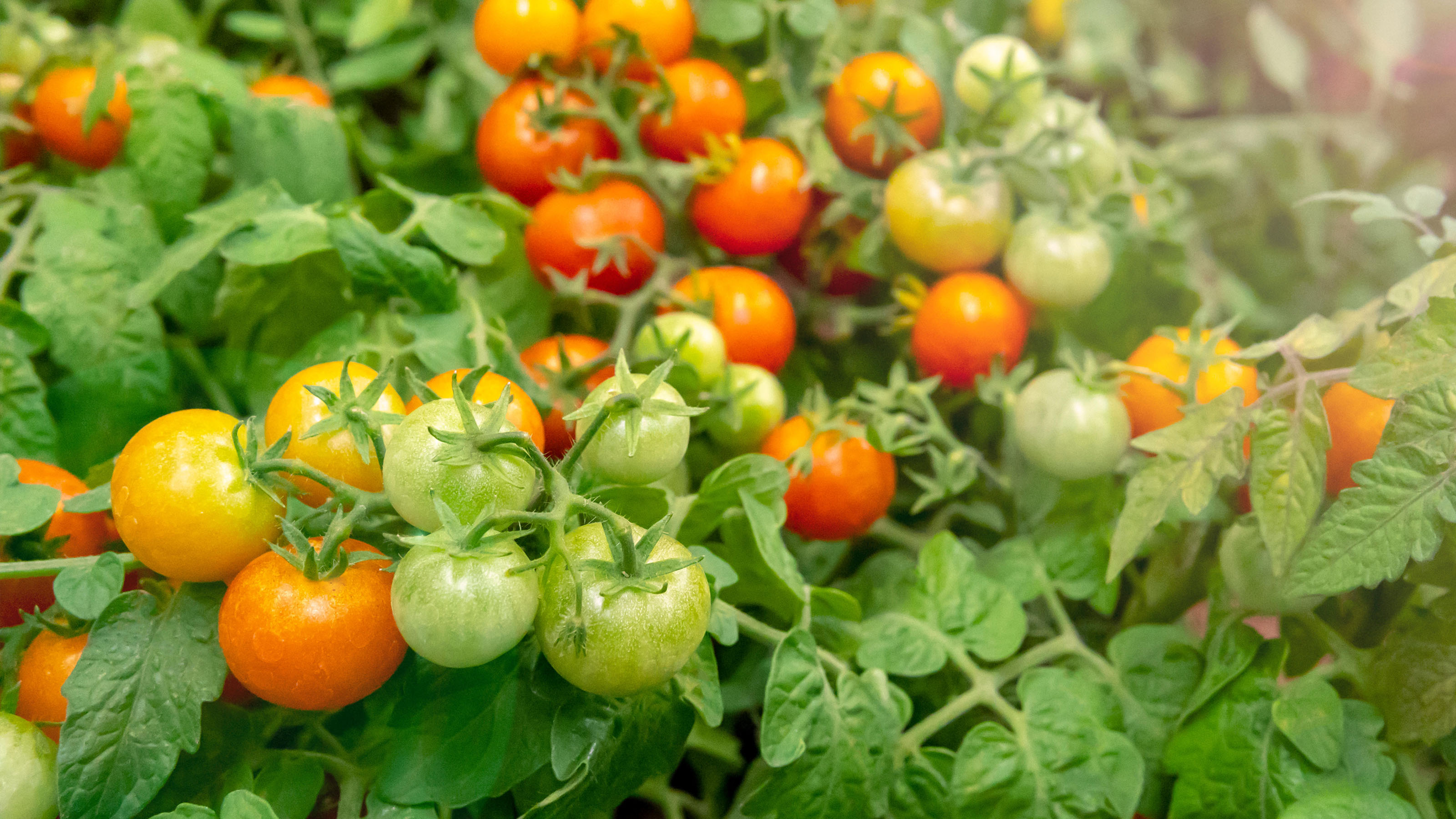

Learn how to grow tomatoes successfully and you'll never look back. Homegrown varieties are undeniably more delicious than those that don the supermarket shelves. They're sweet and tangy – the perfect addition to salads, tomato sauces, or simply eaten straight from the vine. And best of all, these beauties are an easy-care addition to your raised garden bed ideas or greenhouse ideas.
However, to ensure a bumper crop that will feed your family all summer, there are a few insider tricks you need to know. And, we're here to share them. With these tips, you'll be a total pro at knowing how to grow tomatoes, and your summer meals will get an instant boost.
How to grow tomatoes: 7 simple steps
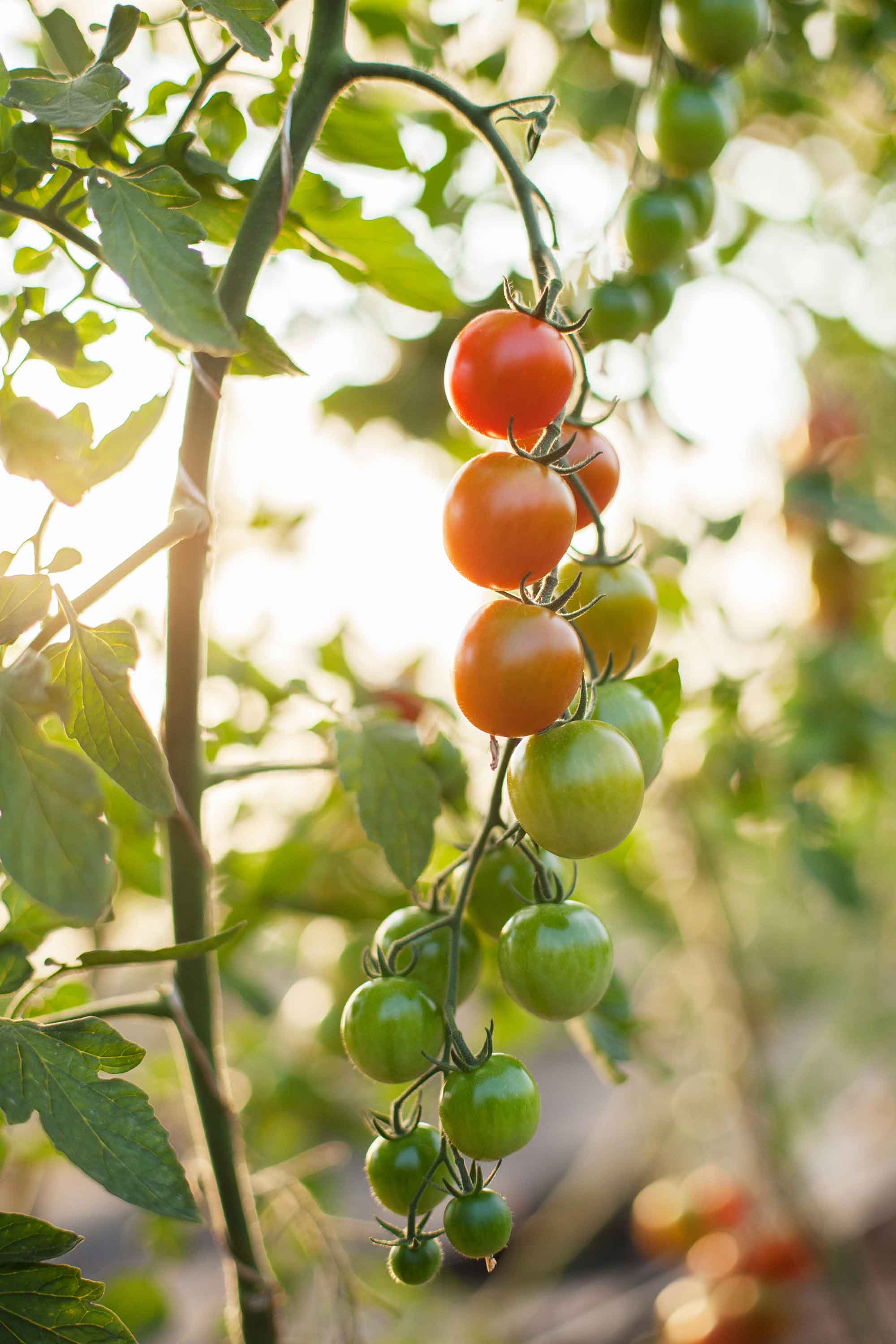
Learn how to grow tomatoes and elevate your cooking with the beautifully fresh fruits
With this step-by-step advice, you'll know how to grow tomatoes in no time:
- Sow your seeds indoors in small pots of moist compost. Cover with clingfilm or place them in a propagator and keep them on a warm windowsill at about 64°F (18°C).
- Once the seeds have started to grow and two leaves have formed, remove the clingfilm or take them out of the propagator and transfer them to 9cm pots filled with multi-purpose compost.
- Support the stems of taller varieties by gently tying them to a pea stick.
- Continue to move into larger pots as the plants grow, keeping the compost damp. Growing from seeds to plants that are ready to move outside normally takes six to eight weeks.
- Move your plants outside after the last frosts, which are normally mid-May. To start with, harden off the plants by moving them outdoors for a few hours a day. Gradually build up the time you leave them outside over a couple of weeks.
- Choose a sunny and sheltered spot and plant the tomatoes in a growing bag or beds full of plenty of well-rotted manure. In beds, make sure the plants are 45–60cm apart. For taller varieties, our climbing plant support ideas will come in handy.
- Pinching out the tomatoes can give you a better crop. Simply snap or cut off side-shoots, which grow between the leaf and the main stem. Just make sure you don't snap off any shoots with flower buds, as these will become tomatoes.
When should you plant tomatoes?
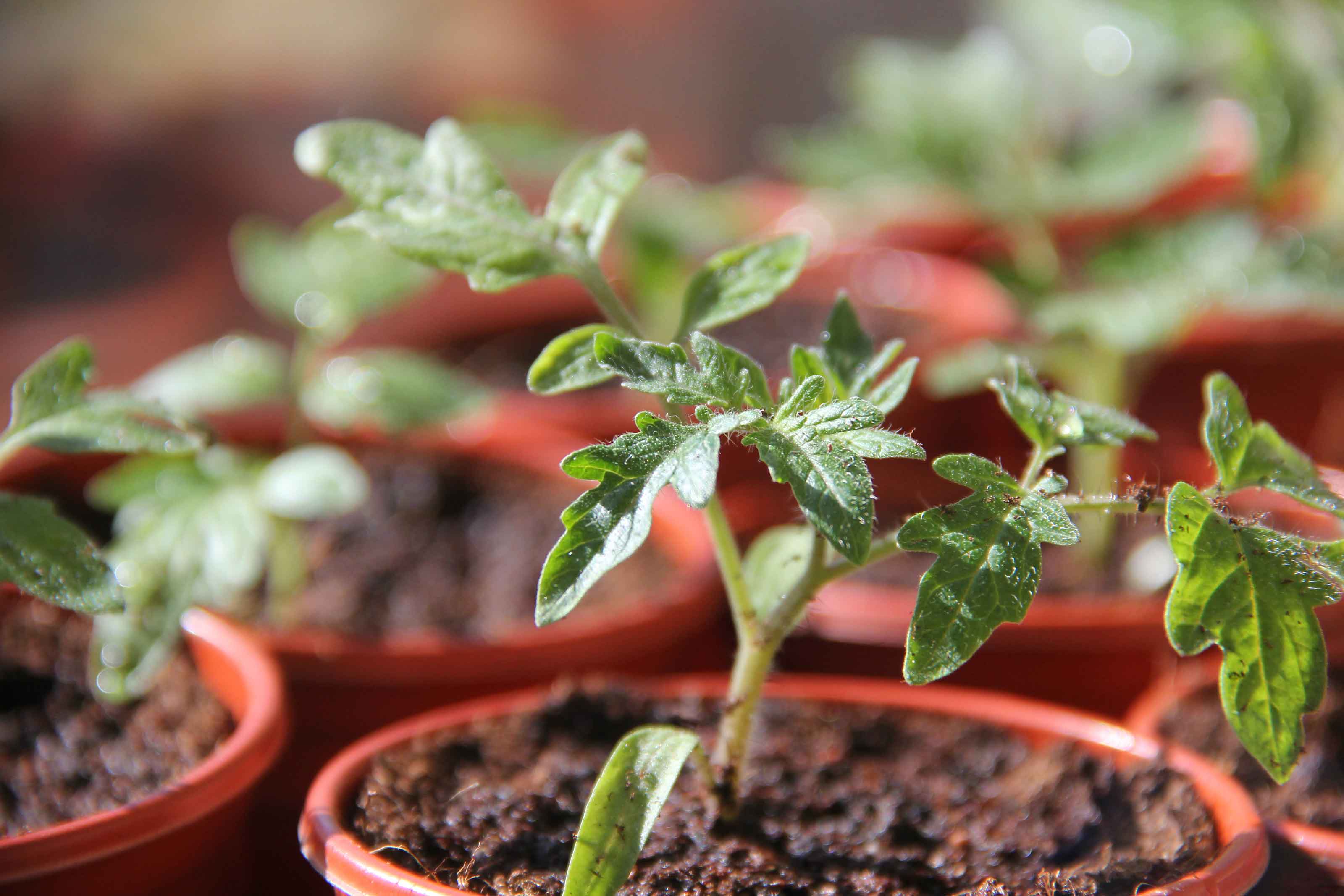
Plant your seeds in spring, ready to harvest in summer
If you're growing your tomato seeds in a greenhouse or as part of your indoor garden ideas, they can be sown from late February to the middle of March. If you've chosen to grow them outdoors instead, look to sow them indoors from the end of March to the start of April. Then, plant them out once temperatures reliably reach double figures at night and the first flower truss has appeared, as suggests Lucy Chamberlain, gardening expert from Amateur Gardening.
Small tomato plants bought from the garden center will be ready to plant when you buy them, normally around the start of April.
What types of tomatoes can you grow?
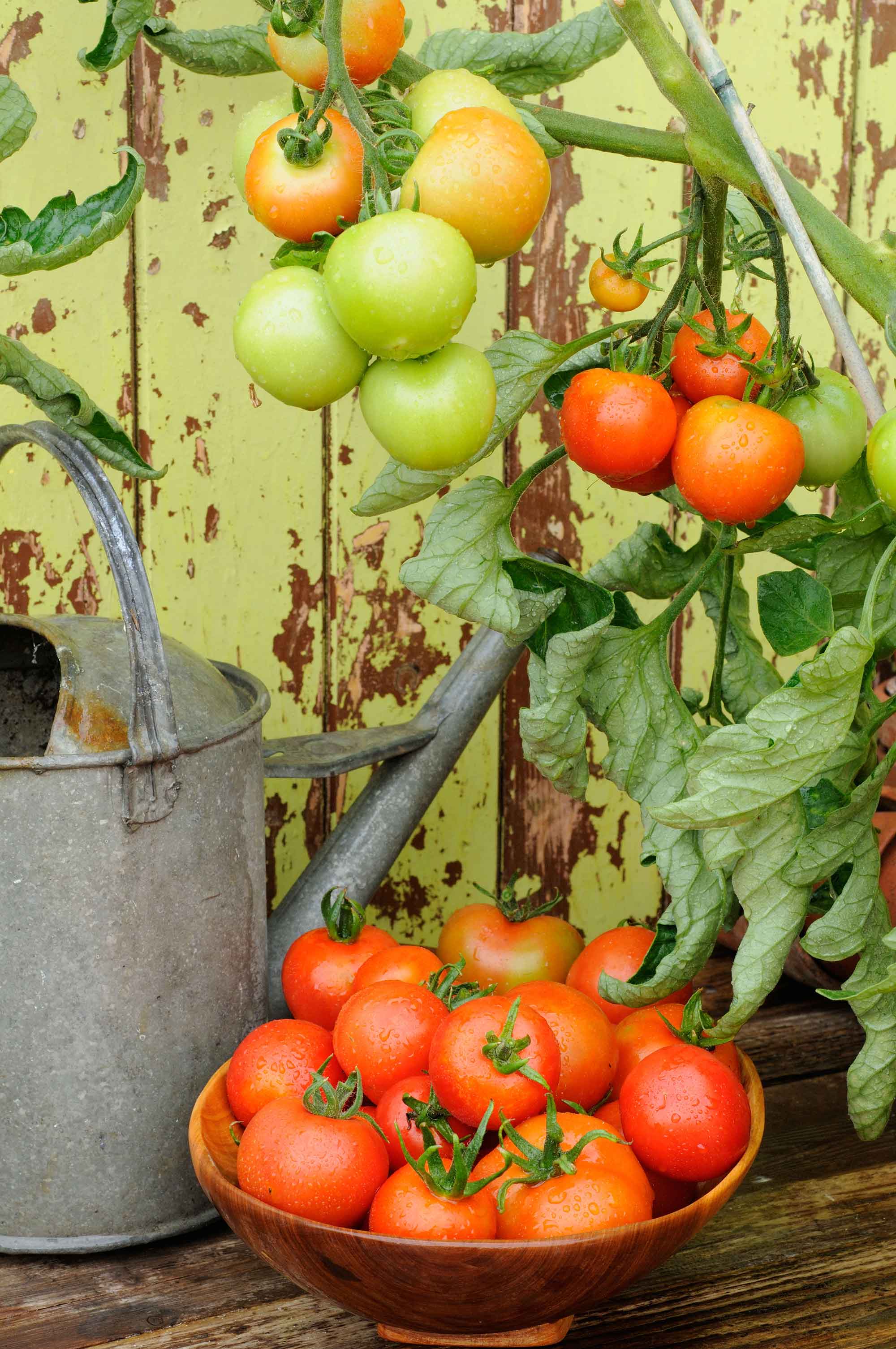
Some tomato varieties are specifically good for patios
There are two main types of tomato plants – cordon and bush.
Bush tomatoes, also known as 'determinate', have (you guessed it) a bushier form than cordon types. As gardening expert Lucy Chamberlain says, they grow as multi-stemmed plants to 4ft in height. You don't need to bother with pruning side-shoots, but staking, as Lucy says, is essential. 'Four canes with twine encircling each plant will work well,' she adds.
Cordon tomatoes, also known as 'indeterminate', grow tall and need to be supported by canes or tied in to a wall. Each plant has one main stem, and side-shoots need to be removed as they appear. You can get around six to seven trusses of tomatoes per plant, explains Lucy.
You can also find tomato varieties that are specifically for patios. As Lucy says, these have to be the 'ultimate low-maintenance tomato to grow.' Essentially, they are compact bushes, Lucy adds – there's no training or pruning required. Some are more upright than others, whilst some have a cascading nature, so work well in pots or hanging basket ideas. They make a good addition to our picks for the best plants for beginners.
How long do tomatoes take to grow?
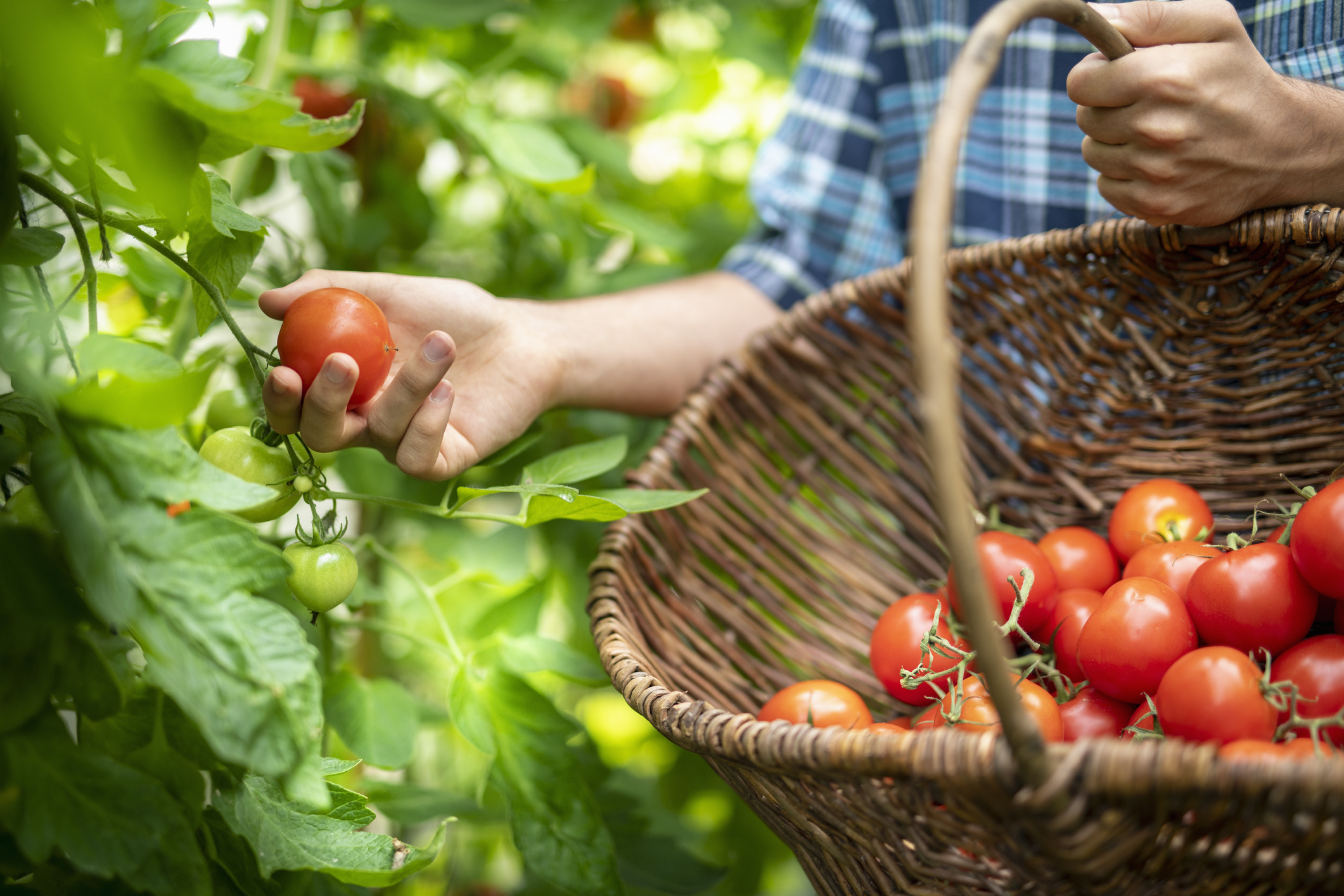
Wondering how to grow tomatoes? Once you've got the plants established, you don't have to wait long before you can pick the fruits
Your tomato plants will reach maturity and be ready to start harvesting about 40–50 days after you've planted them in the ground – usually from mid-summer onwards. As the RHS explains, this does of course depend on the variety, weather conditions, and the size of the fruit – the smaller, cherry types ripen faster than larger ones. Greenhouse-grown tomatoes also tend to have a longer growing period – they will begin to crop earlier and then continue to fruit for longer, right up into the fall.
Always leave tomatoes on the plants to ripen naturally for the best flavor. If the weather turns cold, pick the clusters to ripen indoors (somewhere warm and dark will encourage this), or lift the plants to lay on straw under cloches.
Common problems when growing tomatoes
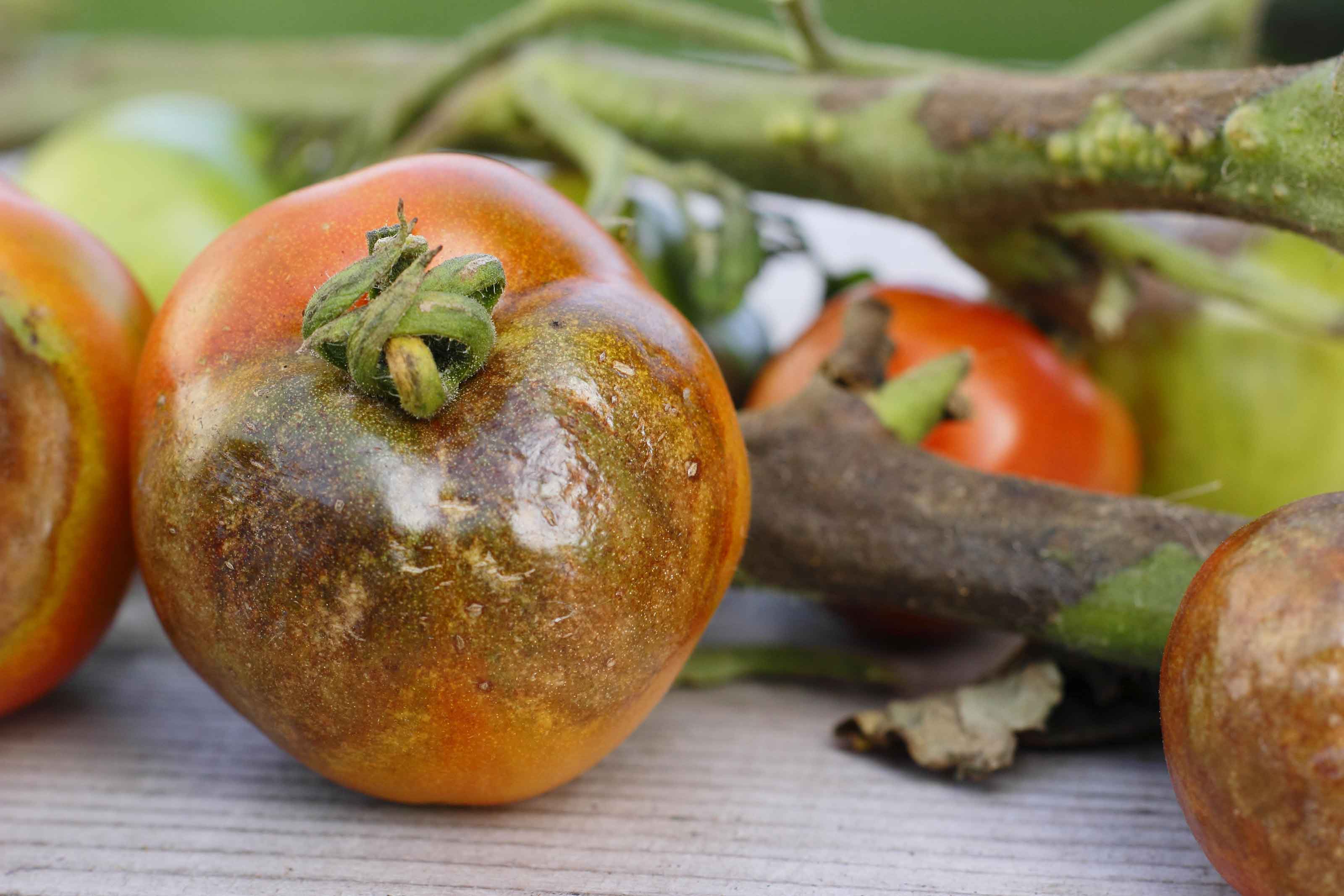
Tomatoes are infamous for their problems with blight, however newer varieties are bred to be more resistant
If you provide your tomatoes with appropriate levels of water, light and nutrients, and protect them from extremes of temperature, they will grow better and produce bigger crops.
As gardening expert Lucy Chamberlain says, blight – a previously common gardeners' woe which causes the fruit and foliage to rot – is becoming less of an issue due to the breeding of more resistant varieties. Cordon beefsteak 'Crimson Blush' and patio cherry 'Summerlast' are just two good examples that Lucy suggests.
Leaf mould can occur with indoor or greenhouse tomato growing, and spreads quickly. Some crops are bred to be naturally resistant, however providing plenty of ventilation to your plants will also help to prevent it.
You may also come across the fruits splitting when learning how to grow tomatoes. This can lead to the growth of mould, but can be avoided if sunlight, water, and temperature levels are monitored carefully. Don't forget to feed your crops too – high soil fertility will also help to deter this problem.
Aphids can also prove an issue for tomatoes, but aren't too tricky to deter. Our guide on how to get rid of aphids has lots of top tips.
More top tips for tomato growing
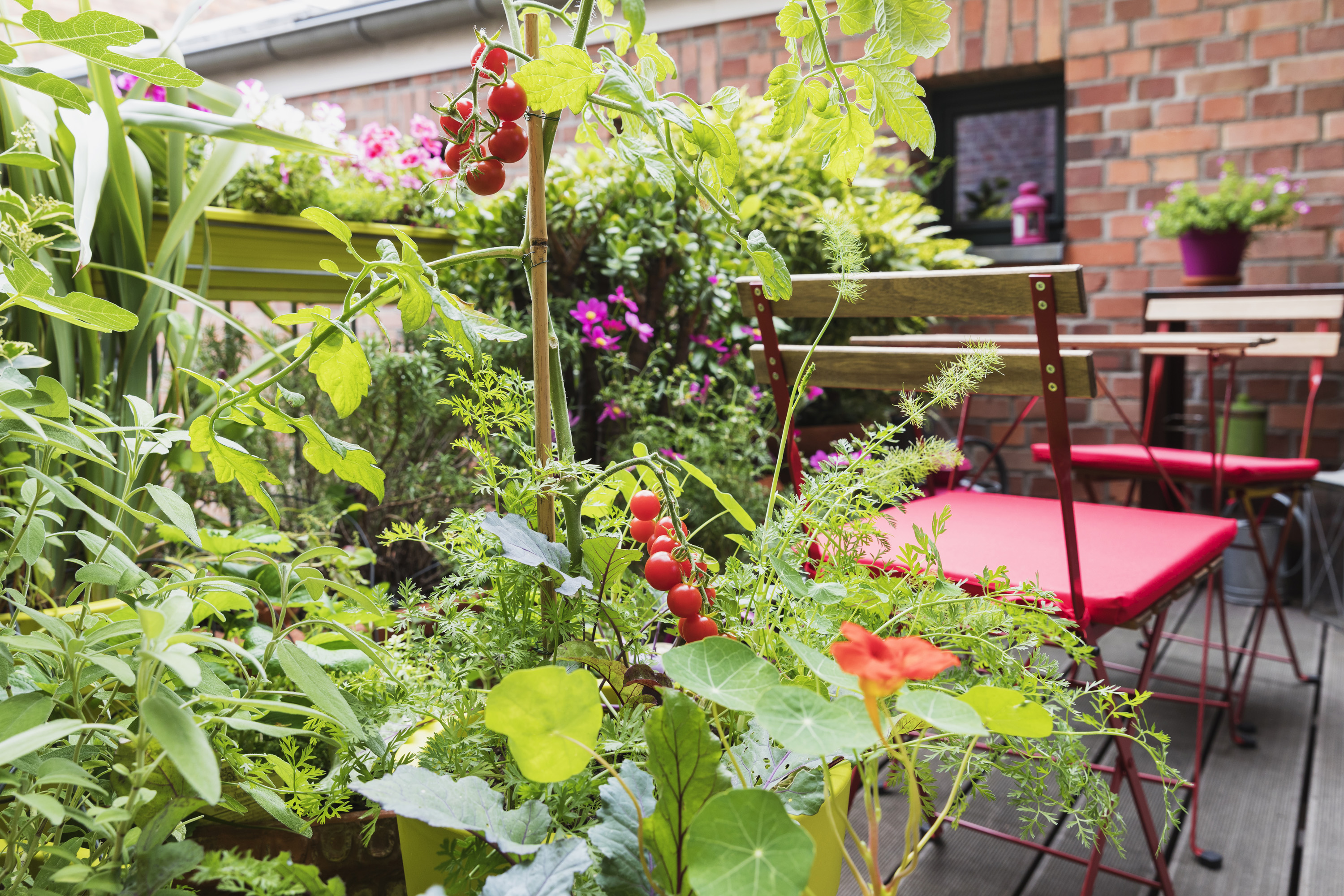
With a few tips and tricks, tomato growing can easily be done in a small courtyard or on a balcony
Once you've learnt the basics for how to grow tomatoes, these extra top tips from gardening expert Lucy Chamberlain are well worth taking on board:
- Apply a proprietary high-potash liquid fertilizer every week, or at least every fortnight.
- Remove leaves around the ripening tomato trusses – this will allow the sunlight to reach the fruits which encourages ripening, and will also help to prevent diseases.
- When planting your tomatoes out, plant them slightly deeper than in the pot. This encourages the buried stem to develop additional roots.
Where can you buy tomato seeds?
Before you start testing out your new skills in how to grow tomatoes, you'll need to get hold of some seeds. Here's where you can find them:
Where to buy tomato seeds in the UK:
- Shop tomato seeds at Amazon
- Shop tomato seeds at Crocus
- Shop tomato seeds at Dobies
- Shop tomato seeds at Suttons
- Shop tomato seeds at Thompson & Morgan
- Shop tomato seeds at You Garden
Where to buy tomato seeds in the US:
- Shop tomato seeds at Amazon
- Shop tomato seeds at Home Depot
- Shop tomato seeds at Walmart
- Shop tomato seeds at Burpee
If you don't fancy buying your seeds, remove seeds from a tomato you're eating with a sharp knife, rinse and allow to dry overnight on kitchen paper. They're then ready for planting. It's a great tip if you're after cheap garden ideas.
6 tomato varieties to try
1. 'Brandywine'
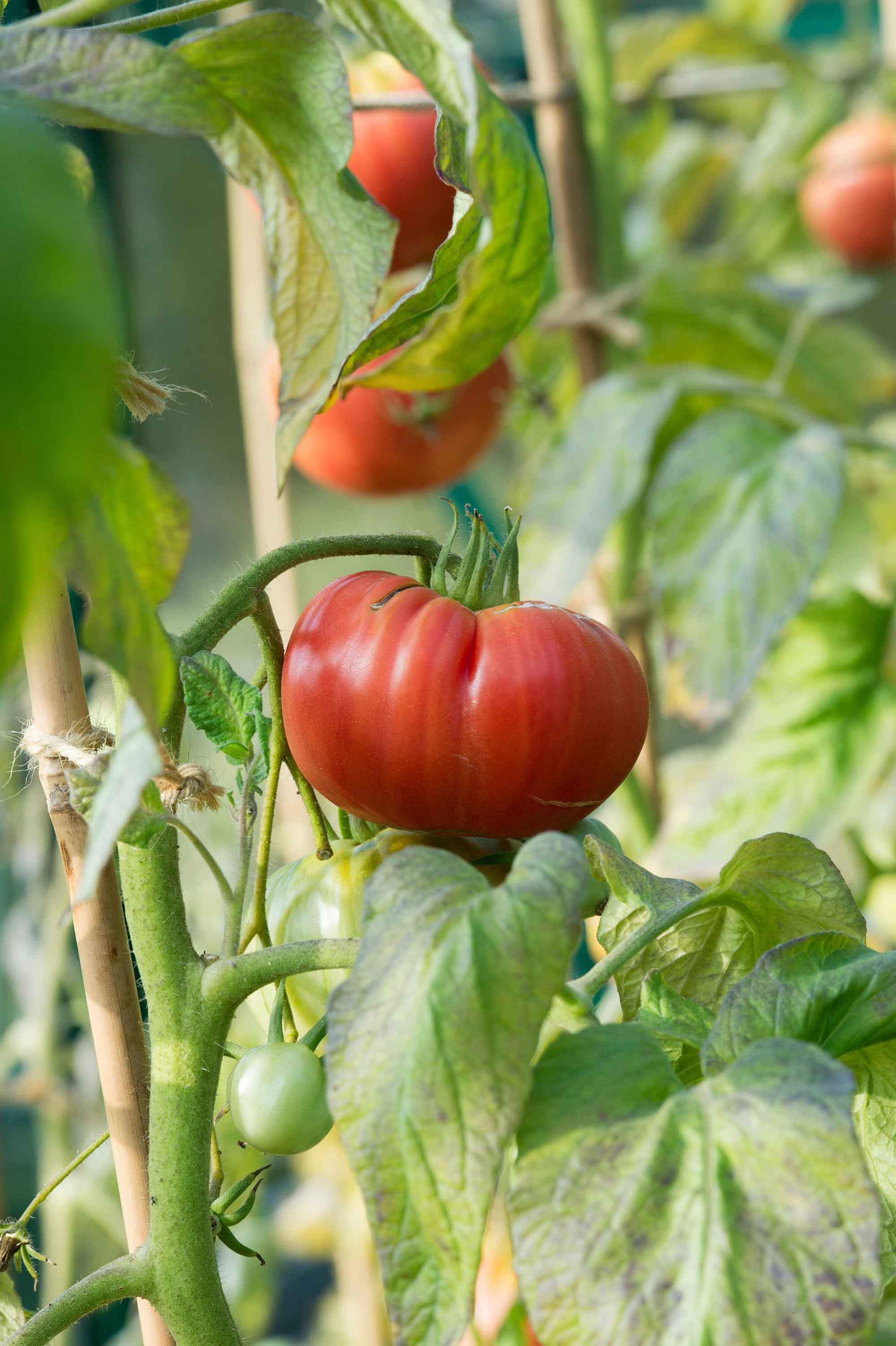
'Brandywine' is an old favorite for its flavor
'Brandywine' produces large, firm, rosy-pink, heirloom fruits, that are well-loved for their delicious flavor. They are what's know as a 'beefsteak' variety of tomato, and work well when sliced in salads or sandwiches.
As easy-grower, these cordon plants can grow up to 78 inches and have foliage which resembles that of a potato.
2. 'Tumbling Tom'
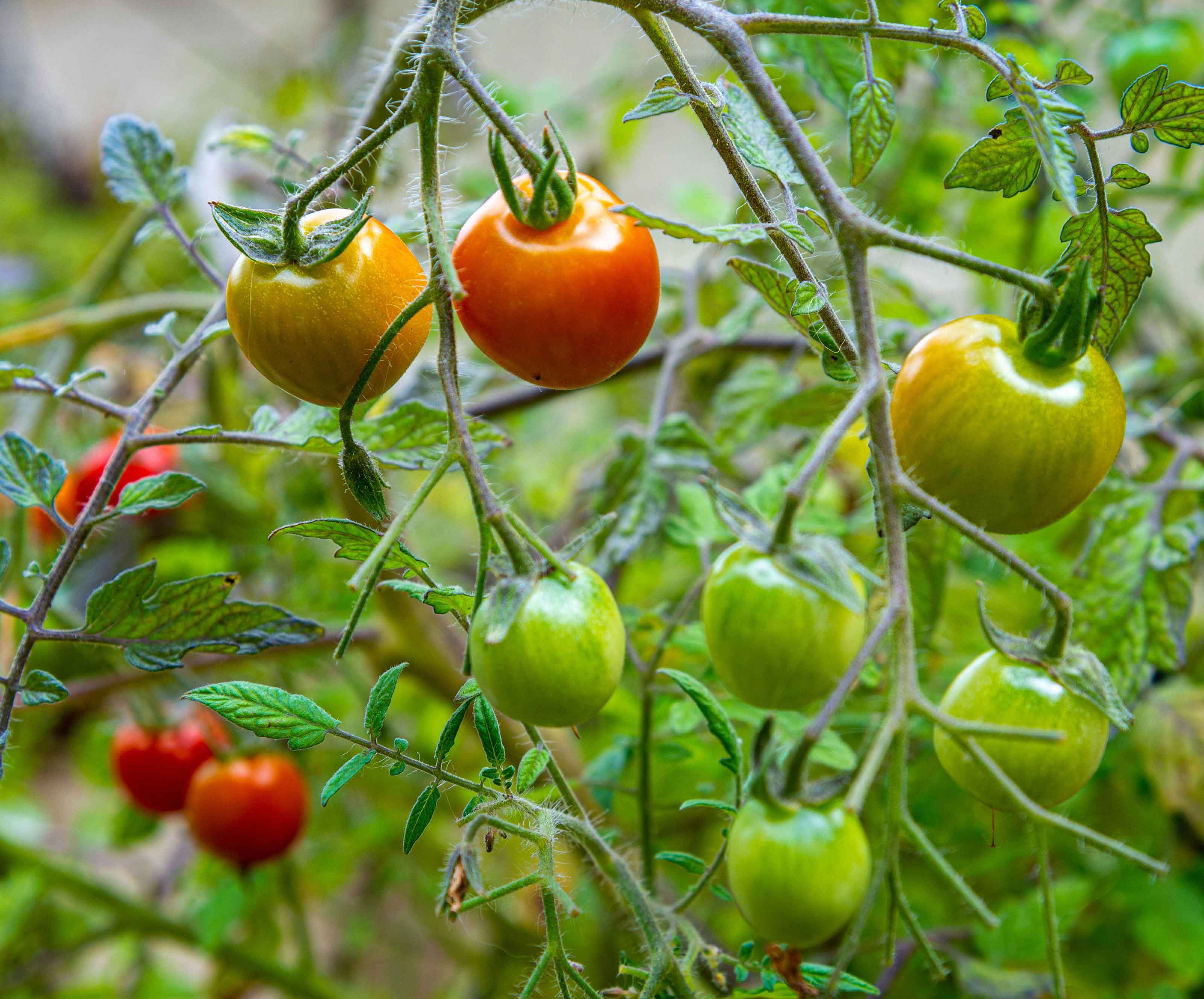
'Tumbling Tom' is a sweet and prolific dwarf variety that's great for hanging baskets
Want to know how to grow tomatoes for pots? This dwarf variety is a great choice for your patio ideas. As the name suggests, it's a cascading plant which will elegantly trail from baskets or garden planter ideas placed up high.
The fruit are sweet and small, and there's no pruning of side-shoots or tying into supports required. If you're after low maintenance garden ideas, this is a good contender to consider.
3. 'Brandy Boy'
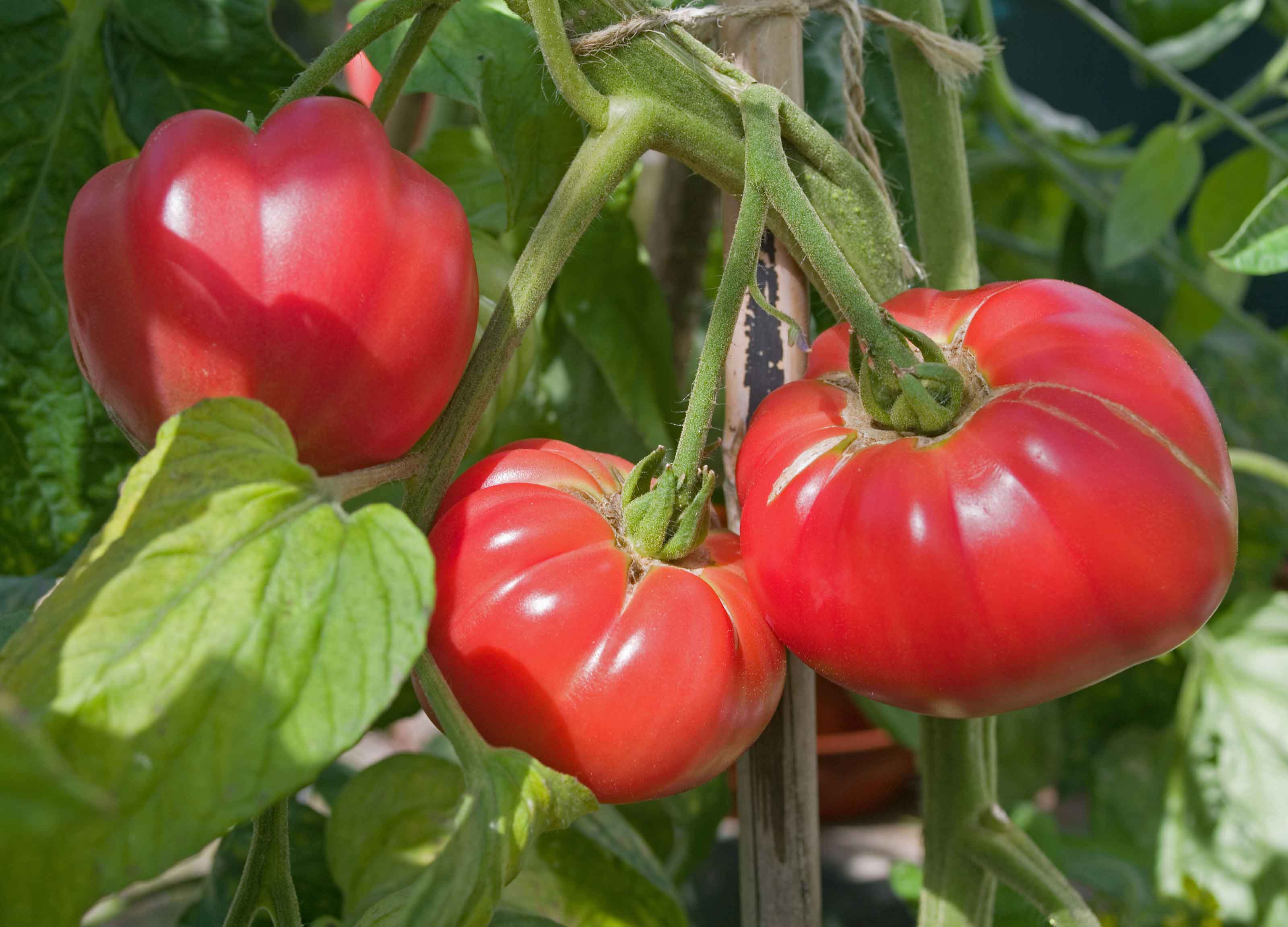
'Brandy Boy' sports ginormous and very tasty fruits
If you want to know how to grow tomatoes that are nothing short of huge, then 'Brandy Boy' is the plant for you; its fruits span up to 5 inches across!
Sweet and tangy with prolific crops, it grows in a more tidily form than the old favorite 'Brandywine' (see above), and has improved disease resistance, too. It can be grown in pots, or in the ground as part of your kitchen garden ideas.
4. 'Crimson Crush'
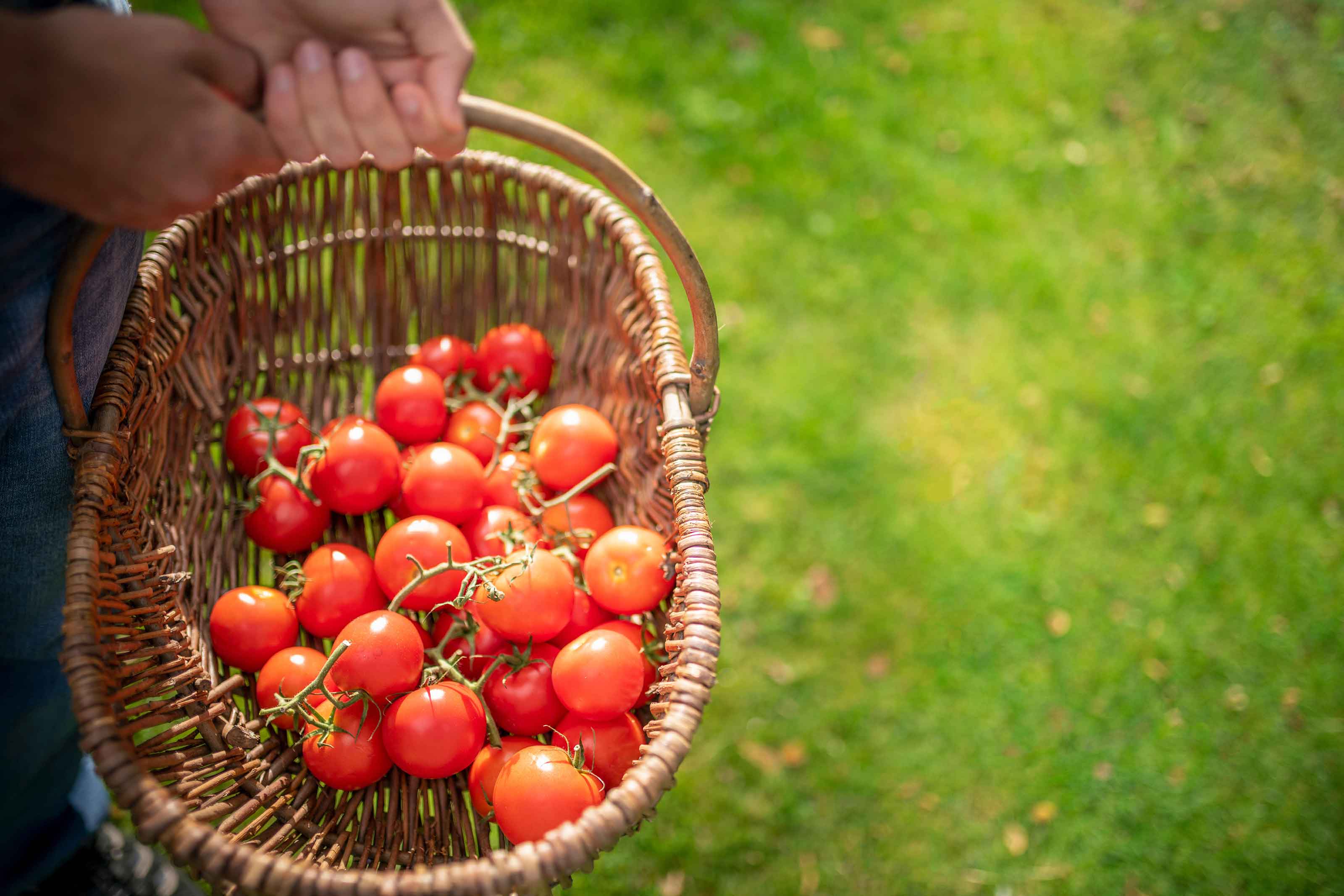
'Crimson Crush' is a fantastic choice for deterring blight
A cordon variety, 'Crimson Crush' plants have excellent resistance to blight. It does well when grown both outdoors and in, and produces tasty fruits which are great for slicing into summer salads.
Height-wise, it grows up to 79 inches.
5. 'Indigo Rose'
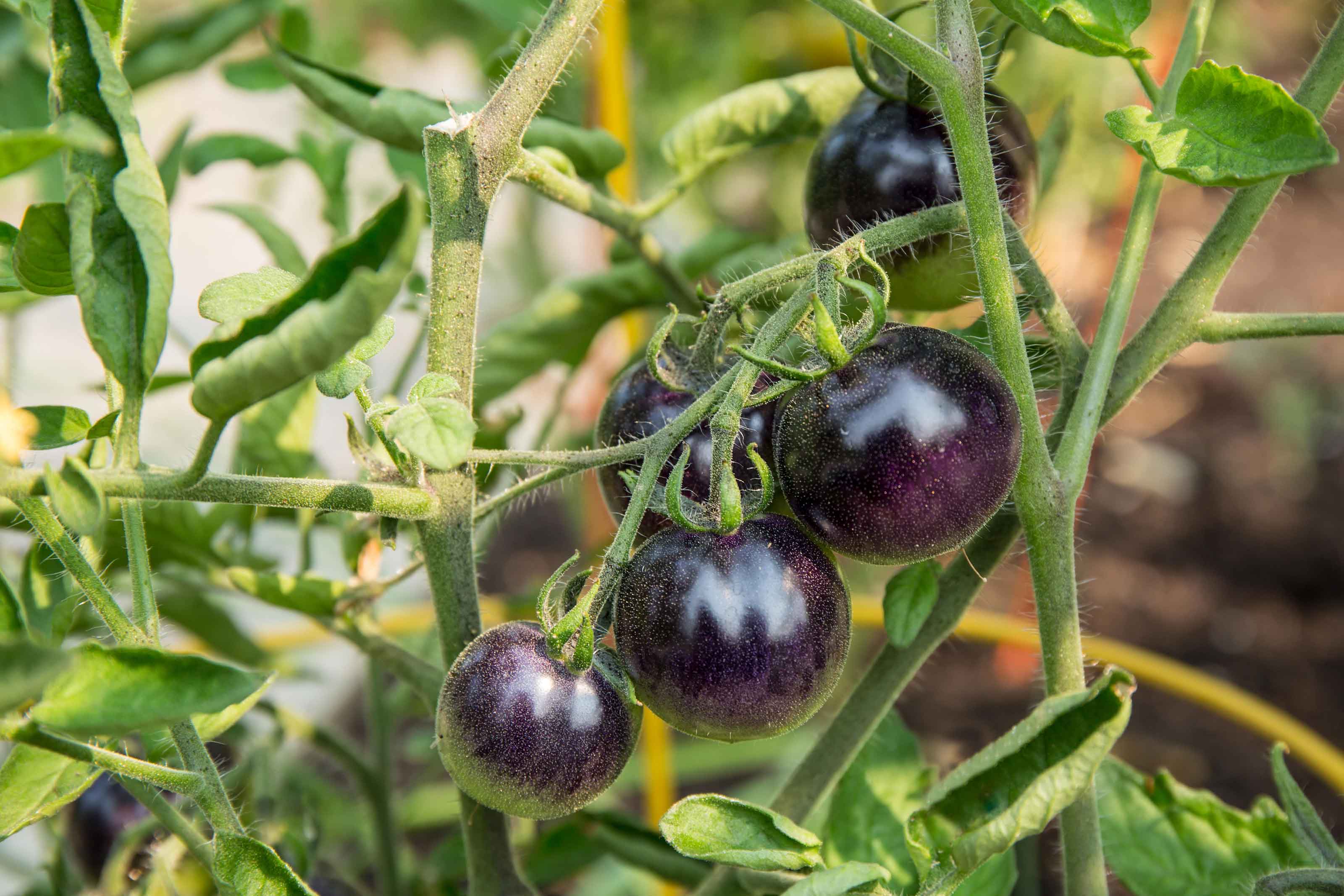
The stunning 'Indigo Rose' tomato
The cordon 'Indigo Rose' offers the darkest tomatoes available – from deep purple to inky black. Due to its eye-catching nature, it makes a great choice if you want to bring tomatoes into your modern garden ideas.
What's more, it has fantastic antioxidant properties and is resistant to disease. It grows up to 79 inches tall.
6. 'Ildi'
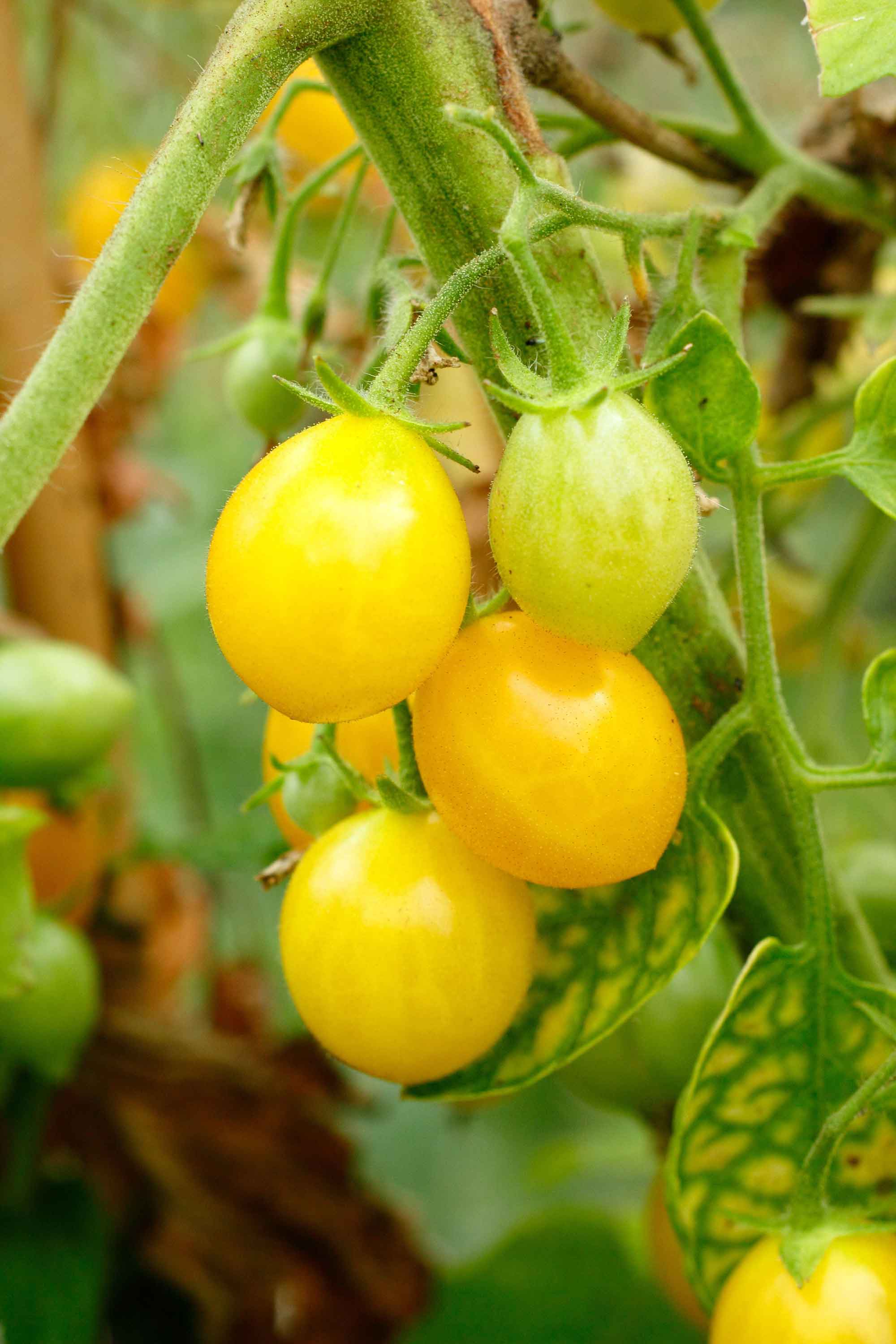
Learn how to grow tomatoes like these and bring an extra burst of color to your garden
The 'Ildi' variety of tomato sports miniature, pear-shaped fruits with a deliciously sweet taste and a delightfully yellow color. Its trusses are abundant – with up to 80 tomatoes growing on each, and it will continue to crop into the autumn.
It's a cordon variety, and grows up to 70 inches tall. It's a good pick for patio gardening ideas or for your greenhouse, but can also do well in a sunny spot in the ground.
Laura has been writing about homes and gardens for 17 years. She joined Real Homes magazine in 2015 as Deputy Editor and then become Editor before taking on her current position as Content Director for brands including Country Homes & Interiors, 25 Beautiful Homes, Period Living and Style at Home. She's currently redesigning the garden of her 1960s home in Worcestershire and will eventually reinstate the swimming pool that's currently filled with mud! Outside of homes, she's a TV presenter for QVC.

